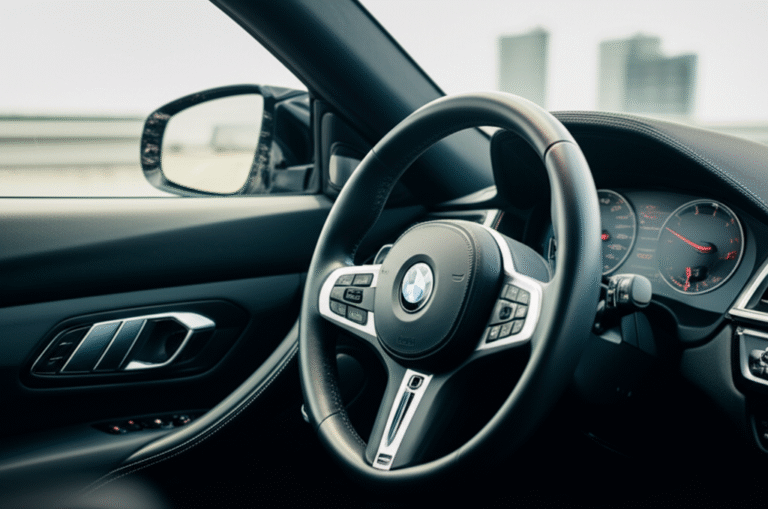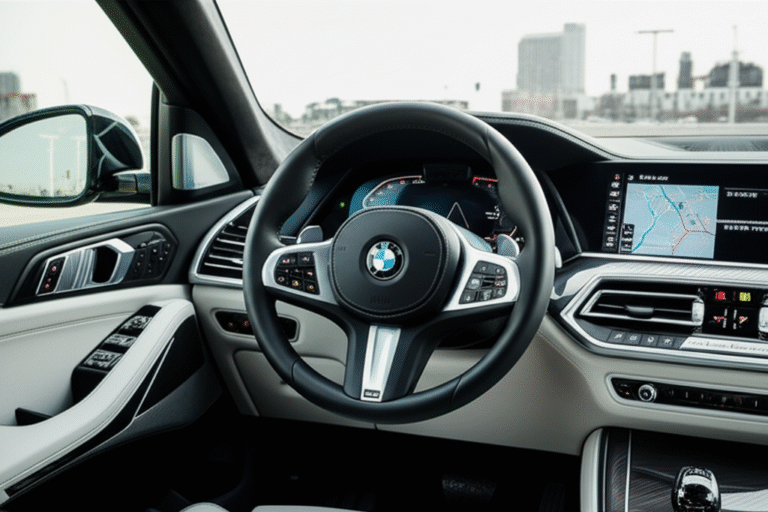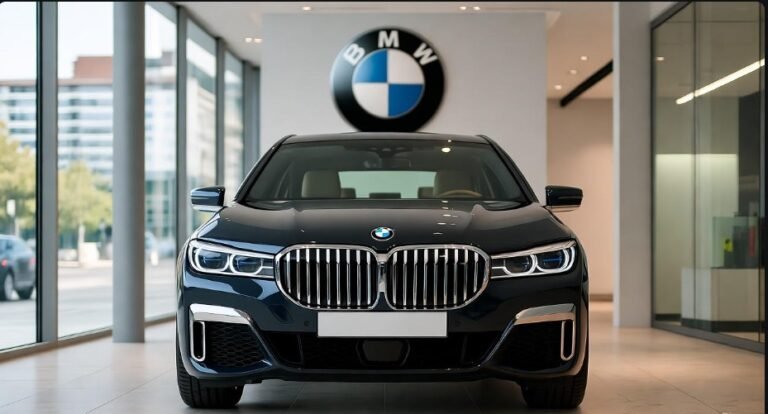BMW GT Full Form: 7 Facts
The BMW GT full form is Gran Turismo. This designation signifies a luxurious, sporty car designed for long-distance journeys. Discover 7 key facts about this iconic BMW model.
Key Takeaways
- BMW GT stands for Gran Turismo.
- It emphasizes comfort and performance for long drives.
- GT models often feature a hatchback design.
- BMW uses GT to differentiate from traditional sedans and coupes.
- Models like the 3 Series GT and 6 Series GT showcase this philosophy.
- GT signifies a blend of sportiness and practicality.
Ever seen a BMW with “GT” badging and wondered what it means? You’re not alone! The automotive world is full of acronyms and designations, and they can sometimes be a bit confusing. But understanding them can unlock a deeper appreciation for the vehicles you see on American roads. The BMW GT full form is particularly interesting because it tells you a lot about the car’s intended purpose and design. It’s a badge that speaks to a specific kind of driving experience, one that blends exhilarating performance with the practicality needed for longer trips. In the USA, where road trips are a cherished part of the culture, a car designed for comfortable, high-speed cruising makes perfect sense. This guide will break down exactly what “GT” means for BMW and explore seven fascinating facts about these versatile vehicles.
Unpacking the BMW GT Full Form: Gran Turismo
At its heart, the “GT” in BMW GT stands for Gran Turismo. This term has a rich heritage in the automotive world, originating from Italy – ‘Gran Turismo’ literally translates to ‘Grand Tourer’ in English. Traditionally, a Gran Turismo car is a high-performance luxury vehicle designed for comfortable and fast travel over long distances. Think of it as the perfect companion for those cross-country drives that are so popular across the United States, from the scenic routes of California to the historic highways of the East Coast.
BMW adopted this nomenclature to signify a specific breed of car within its extensive lineup. These aren’t just everyday sedans or sporty coupes; they are engineered with a particular emphasis on combining potent engines, sophisticated suspension systems for a smooth ride, and spacious interiors for occupants and their luggage. The spirit of the Gran Turismo is about enjoying the journey as much as the destination, making it a perfect fit for drivers who appreciate both performance and the luxury of a comfortable ride, especially when covering significant mileage.
7 Bold Facts About BMW’s Gran Turismo Models
Let’s dive into what makes BMW’s GT models stand out. Understanding the “GT” designation reveals a lot about their unique place in the automotive landscape. We’ll explore not just the meaning but the practical implications and historical context of these impressive machines.
Fact 1: The Genesis of the GT Concept
The Gran Turismo concept isn’t new to BMW; it’s a philosophy that has evolved over decades. While many manufacturers have used the “GT” badge, BMW’s interpretation often involves a unique blend of its established driving dynamics with enhanced practicality. Early influences can be seen in models that prioritized long-distance comfort and performance, paving the way for the more distinct GT models we see today. The idea was to offer something that could be as at home on the Autobahn as it could be navigating the diverse landscapes of America. This historical context explains why BMW’s GT models often feel like a thoughtful evolution of existing platforms, rather than a completely radical departure.
Fact 2: A Distinctive Body Style: The Hatchback Advantage
One of the most recognizable features of many BMW GT models, particularly those in the 3 Series and 5 Series (later 6 Series) lines, is their distinctive hatchback body style. This design choice is crucial to the GT philosophy. Unlike a traditional sedan with a separate trunk, a hatchback offers a larger, more accessible opening to the cargo area. This significantly increases practicality, making it easier to load and unload luggage, sports equipment, or groceries. For families or individuals who need versatility without sacrificing style or performance, this hatchback design is a major benefit. It allows the car to adapt to various needs, embodying the “Grand Tourer” spirit of being ready for any journey.
Consider the difference when packing for a weekend getaway or a move across town. A sedan’s trunk can be restrictive, while a GT’s rear hatch opens up the entire rear of the car, often with seats that fold down to create a cavernous load space. This versatility is a hallmark of modern automotive design, and BMW has effectively incorporated it into its GT offerings.
Fact 3: Bridging the Gap: Sedan vs. Coupe vs. GT
BMW uses the GT designation to carve out a specific niche between its more traditional sedans (like the 3 Series Sedan) and its sportier coupes or even SUVs. A GT model typically offers more rear legroom and a higher seating position than a comparable sedan or coupe, enhancing comfort for passengers on long drives. At the same time, it retains a sleek, sporty profile that distinguishes it from an SUV. This middle-ground positioning makes BMW GTs appealing to a broad range of drivers who might find a pure sedan too conventional and a coupe too impractical or an SUV too tall.
Here’s a simple way to visualize it:
| Vehicle Type | Primary Focus | Typical Characteristics |
|---|---|---|
| BMW Sedan | Everyday driving, comfort, traditional styling | Four doors, separate trunk, balanced performance |
| BMW Coupe | Sportiness, dynamic handling, sleek design | Two doors, lower profile, often less rear space |
| BMW GT | Long-distance comfort, versatility, sportiness | Hatchback, spacious interior, elevated seating, enhanced cargo |
This table highlights how the GT aims to blend the best attributes of different vehicle types, offering a unique proposition for the discerning driver in the USA.
Fact 4: Performance and Comfort in Harmony
The “Gran Turismo” aspect inherently signifies a focus on performance. BMW GT models are equipped with powerful engines, responsive transmissions, and sophisticated suspension systems that provide a dynamic driving experience. However, this performance is finely tuned to ensure exceptional comfort during long journeys. The suspension is often optimized to absorb road imperfections, reducing fatigue for both the driver and passengers. This means you can enjoy spirited driving on twisty roads and then transition to a relaxed, smooth cruise on the highway without compromise. It’s this duality that defines the GT.
BMW’s commitment to driving pleasure, known as “The Ultimate Driving Machine,” is evident in the GT models. They offer the engaging handling expected of a BMW while prioritizing the refinement needed for hours behind the wheel. This is achieved through advanced chassis control, aerodynamic designs, and meticulously engineered powertrains. For example, models like the BMW 8 Series Gran Coupe (though technically a Gran Coupe, it shares the GT spirit of blend) showcase this by offering powerful engines and a sleek profile suitable for grand tours.
Fact 5: A Diverse Lineup: From 3 Series GT to 6 Series GT
BMW has applied the GT designation to various models over the years, showcasing its versatility. You might have seen the 3 Series Gran Turismo (3 GT), which offered the practicality of a hatchback and increased interior space within the compact executive segment. It was a unique offering, providing more room than its sedan counterpart. Then there was the 5 Series Gran Turismo (5 GT), a larger, more luxurious vehicle that blended SUV-like space with coupe-like styling and a unique two-piece tailgate. Later, the mantle was effectively passed to the 6 Series Gran Turismo (6 GT), which continued the tradition of offering a spacious, comfortable, and stylish vehicle with a focus on long-distance touring.
These different iterations demonstrate BMW’s strategy to adapt the GT concept to various market segments, catering to a wide array of consumer needs across the United States. Each model, while sharing the GT philosophy, offered distinct characteristics suited to its size and price point.
Fact 6: Practicality Meets Premium Appeal
The BMW GT is designed for those who appreciate the finer things but also need a vehicle that can keep up with a busy, dynamic lifestyle. The premium interior appointments – high-quality materials, advanced infotainment systems, and comfortable seating – ensure that every journey is a luxurious experience. The added utility of the hatchback design and expanded cargo space means you don’t have to choose between a car that looks good and a car that works for your life. This blend of practicality and premium appeal is a cornerstone of the GT identity, making it a compelling choice for professionals, families, and anyone who values both form and function.
In the USA, where personal space and comfort are highly valued, the spaciousness and versatility of a BMW GT are significant selling points. Whether navigating urban streets, cruising down the interstate, or heading to a weekend retreat, these vehicles are built to impress and to serve.
Fact 7: A Unique Position in the BMW Family
The BMW GT models occupy a unique position within the BMW hierarchy. They are not as overtly sporty as the M-performance models, nor as utilitarian as the X-series SUVs. Instead, they offer a distinct compromise that appeals to a specific driver. They maintain the sophisticated driving dynamics that BMW is renowned for, but with an added layer of practicality and comfort that makes them ideal for covering vast distances, a common activity for many Americans. This thoughtful engineering allows them to stand out in a crowded automotive market, offering something genuinely different for those who seek it.
Pro Tips for BMW GT Owners
For any luxury vehicle, especially one designed for long journeys, proactive maintenance is key. Regularly check your tire pressure, especially before long drives, as proper inflation significantly impacts fuel efficiency and handling. Also, ensure your fluid levels (oil, coolant, brake fluid) are consistently topped up. For detailed maintenance schedules and tips specific to your BMW GT model, consulting the official owner’s manual or a certified BMW service center in the USA is highly recommended.
BMW GT: A Symbol of Versatile Luxury
The BMW GT, or Gran Turismo, represents a thoughtful integration of performance, luxury, and practicality. It’s a designation that signifies a car built for the journey, capable of exciting driving dynamics while providing the comfort and space needed for extended travel. From its Italian roots to its modern interpretation by BMW in the USA, the GT concept continues to offer a compelling option for drivers who demand more from their vehicles.
Whether you’re a seasoned car enthusiast or new to the world of automotive designations, understanding the “GT” label adds another layer of appreciation for these versatile machines. They are more than just cars; they are finely engineered companions for life’s grand tours.
Frequently Asked Questions (FAQ)
Q1: What does “GT” stand for in BMW models?
A1: “GT” stands for Gran Turismo, an Italian term meaning “Grand Tourer.” It signifies a car designed for comfortable, high-speed travel over long distances.
Q2: Are BMW GT models good for long road trips in the USA?
A2: Yes, absolutely. BMW GT models are specifically engineered for long-distance comfort and performance, making them ideal for road trips across the diverse landscapes of the USA.
Q3: What is the main difference between a BMW GT and a BMW Sedan?
A3: The main difference is often the body style. GT models typically feature a hatchback design for better cargo access and increased practicality, along with often more rear legroom and a higher seating position compared to a traditional sedan.
Q4: Are BMW GT models considered sporty?
A4: Yes, while emphasizing comfort and practicality, BMW GT models retain the sporty driving dynamics and powerful engines that BMW is known for, offering a blend of performance and refinement.
Q5: What are some examples of BMW GT models?
A5: Historically, examples include the BMW 3 Series Gran Turismo (3 GT), 5 Series Gran Turismo (5 GT), and the more recent 6 Series Gran Turismo (6 GT). The spirit also lives on in models like the 8 Series Gran Coupe.
Q6: Is the cargo space in a BMW GT significantly larger than in a sedan?
A6: Yes, due to the hatchback design and often folding rear seats, BMW GT models generally offer significantly more flexible and voluminous cargo space than comparable sedans, especially for bulkier items.
Q7: Where can I find official information about BMW GT maintenance in the USA?
A7: For official maintenance schedules and specific information about your BMW GT model, always refer to your vehicle’s owner’s manual. You can also visit the official BMW USA website for resources and to locate authorized service centers.




